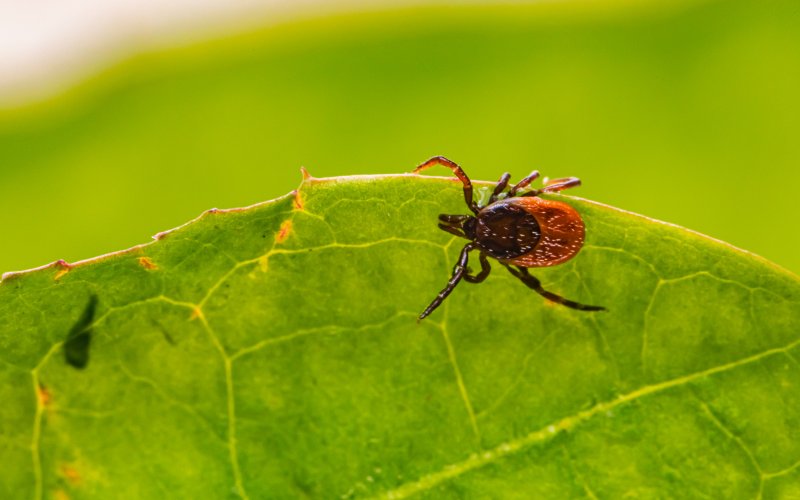Alum Continues Work on Tick-Borne Illness

ALBANY, N.Y. (October 13, 2021) – Collin O’Connor, BS ’18, MS ’20, started researching tick-borne illnesses as a student at the School of Public Health. After publishing his master’s thesis on tick-borne diseases and graduating with his Master of Science in Epidemiology, he now conducts field work in the Western Region of New York State for better understanding tick-borne illness while working towards his PhD in Health Geography.
When O’Connor entered UAlbany’s Department of Epidemiology and Biostatistics, he was excited to learn more about health outcomes and disparities in order to reduce risks and prevent outbreaks.
“The work of a single epidemiologist can be extremely important,” O’Connor says. “An ounce of prevention is worth a pound of cure—that’s a Ben Franklin quote, but I think it’s particularly relevant to the field of epidemiology.”
During his first year of graduate school, O’Connor started working at the New York State Department of Health (NYSDOH) where he conducted field sampling and laboratory testing of tick specimens in the Bureau of Communicable Disease Control’s Vector Ecology Lab, under the direction of fellow UAlbany alum, Research Scientist and Laboratory Supervisor Melissa Prusinski [Beblowski], BS ‘00.
“The topic was very new to me, but I was interested since I was a member of the UAlbany UAlbany Outdoors Club as an undergraduate student,” O’Connor says.
After starting his work in the Vector Ecology Lab, he began to plan for his thesis project, ultimately published in advance in the Journal of Medical Entomology earlier this summer. The work focused on better understanding the climatic and geographic extent of two tick-borne diseases in New York State – anaplasmosis and babesiosis, both caused by pathogens spread by the blacklegged tick or “deer” tick.
“These two diseases had occurred at similar rates in New York in the 2000s and early 2010s, but anaplasmosis rates increased dramatically in recent years,” O’Connor explains. “Further, the increase in anaplasmosis has not been geographically uniform. Rates were much higher near Albany and the Capital Region, while rates of babesiosis were more focused in the Lower Hudson Valley and Long Island. I hoped to highlight aspects of climate that might lead to an increase or decrease in cases of each disease.”
O’Connor and his research colleagues found that winter precipitation may influence the different geographic patterns of anaplasmosis and babesiosis, and that minimum winter temperature, elevation, and land cover change had similar influences on both diseases, though more work is needed to better understand these differing relationships.
“It is helpful that there is so much interdisciplinary collaboration at the University,” O’Connor says. “Throughout my thesis project, I needed help with some of the geographic methods, and a faculty member had suggested that I reach out to Shiguo Jiang in the Geography and Planning Department. He helped me through the processes as I worked my way through methods that were very new to me.”
Currently, O’Connor is earning his PhD in Health Geography at the University at Buffalo and conducting field sampling for NYSDOH in Western New York focused on tick-borne illness.


